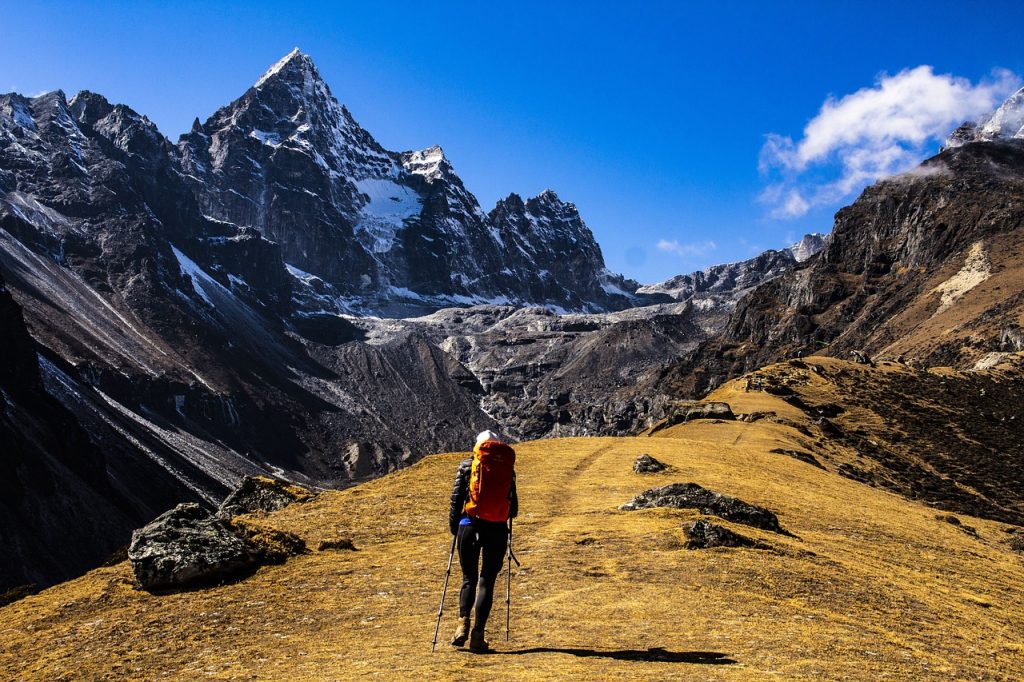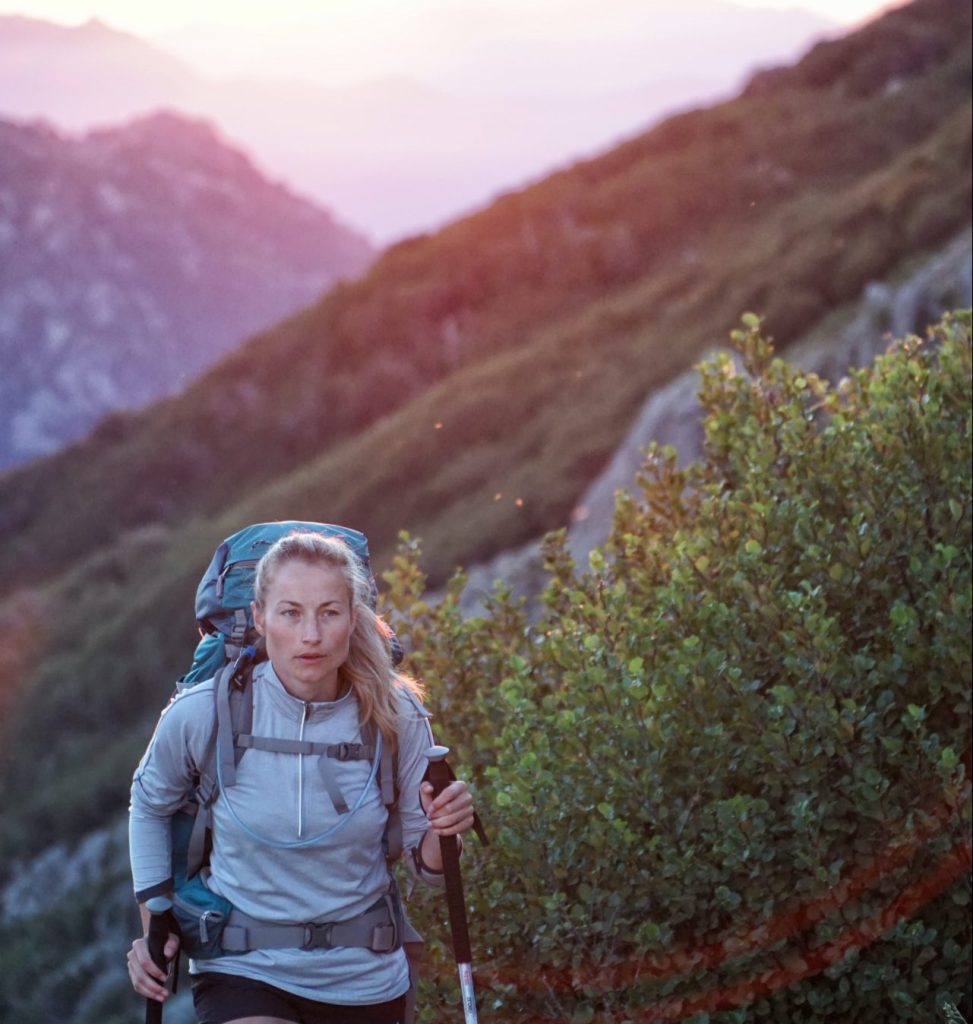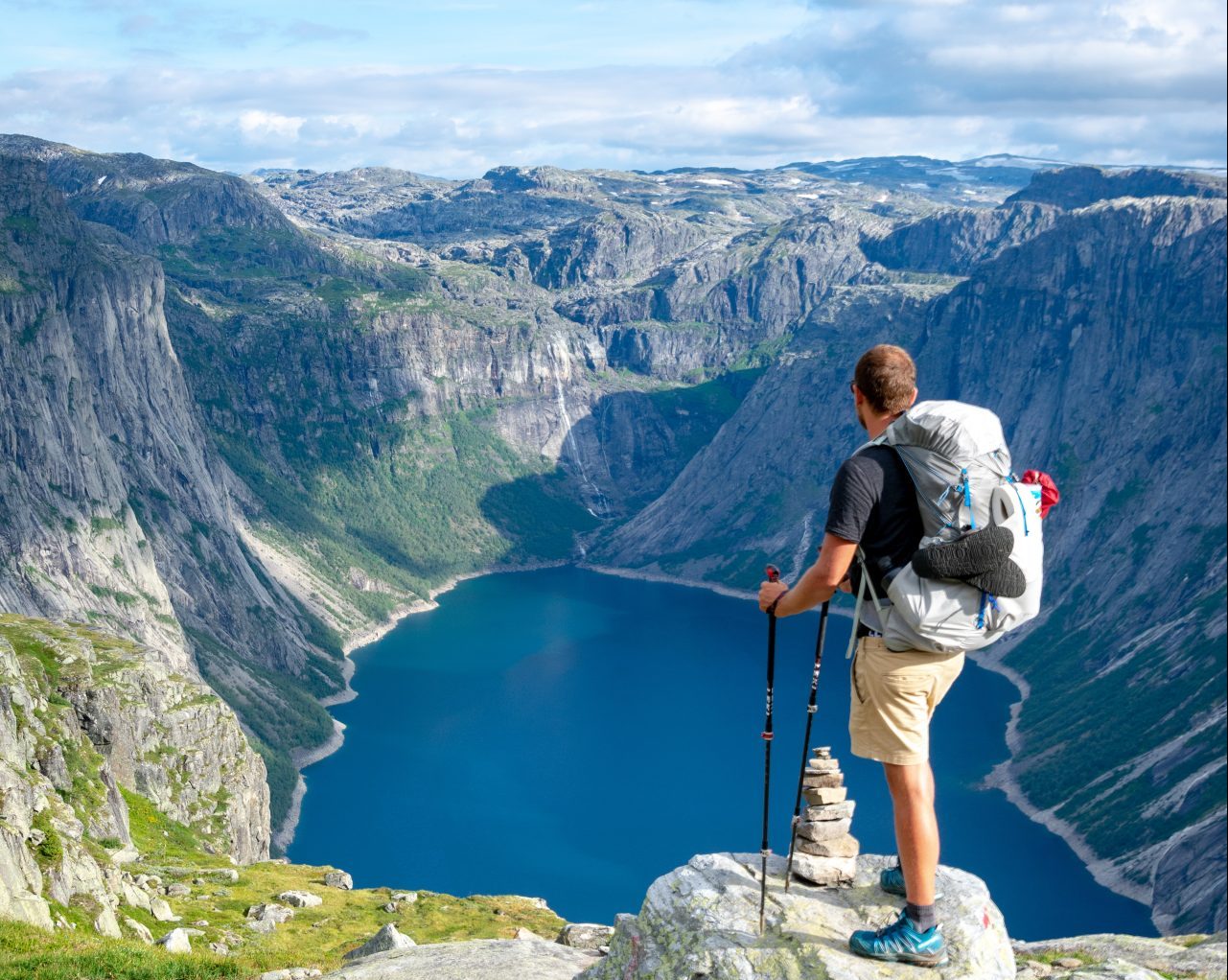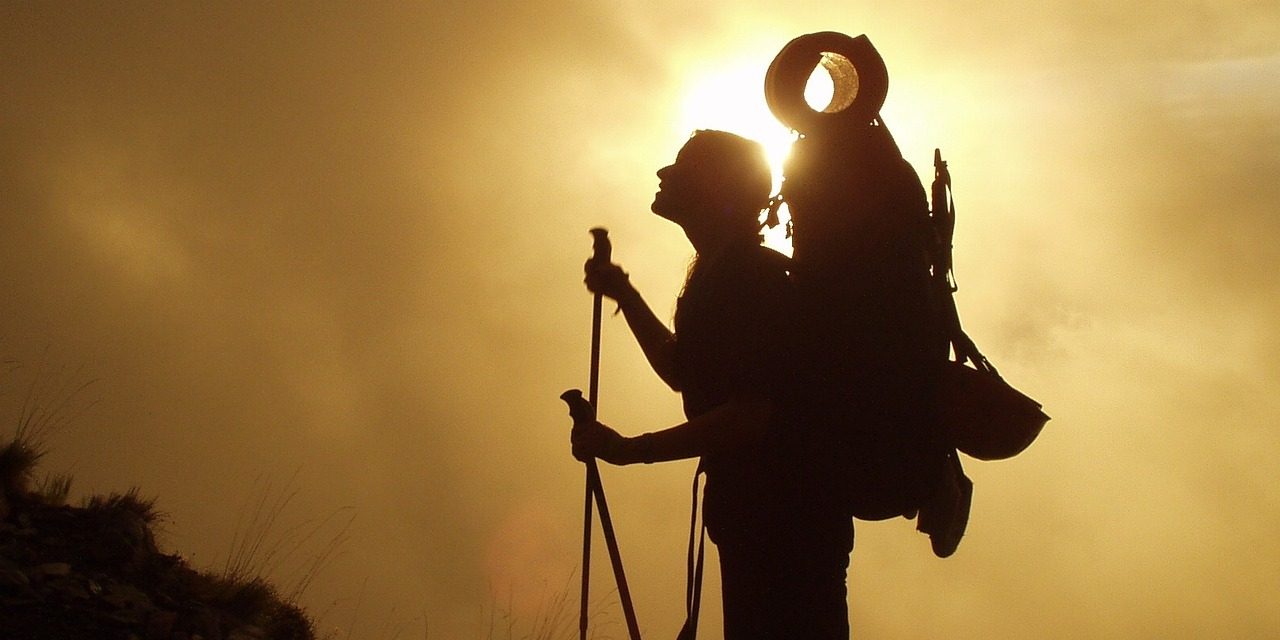How to walk with trekking poles and its benefits
Have you ever wondered how to use the sticks properly and which ones to choose? Until not so long ago, people only walked with their hands-free or eventually just with the help of wooden sticks they picked up along the way. In fairly recent times, however, trekking poles become a fundamental piece of gear for hikers and backpackers. Many remain sceptical about the topic and prefer to hike bare-handed, but if you choose them wisely and understand how to walk with trekking poles correctly, they can be a great help indeed!

First of all, trekking poles enhance your stability and improve your balance by providing great support on every type of terrain since you switch from two to four supports. Benefits are greater on uneven and steep slopes, where balance is more precarious, or whenever you carry a hefty backpack, which moves your centre of gravity.
If the poles are of the right size and you use them correctly, the rhythm also improves, as the motion is more fluid and coordinated, increasing speed.
Since the sticks absorb a part of the shock and impact that your body would usually sustain while hiking especially downhill, they take some of the pressure off of your legs and alleviate the pain. Thanks to the poles in fact, the weight is also transferred to the arms, thus relieving the pressure and load on the knees and ankles joints, reducing it by about a third.
In addition to this, they improve your respiratory efficiency. By performing the correct movement in fact, there is a greater opening of the arms with a consequent expansion of the ribcage and thus an increase in blood oxygenation, which leads to a reduction in fatigue.
Last, they also involve the upper body in the motion, preventing your hands from swelling and allowing a workout of the arms, especially of the triceps.

- To walk correctly with trekking poles, they must always be used in tandem, so that the effort is distributed equally between the arms. The movement of the sticks must be alternated with that of the legs: a left pole with a right leg, and vice versa. Only with the opposite arm/leg motion, the benefit will be tangible and the full potential of these valuable tools will be exploited.
- Remember also to keep your elbows close to your sides as you hike.
- Depending on the terrain steepness then, how the pole is held also changes so that its utility can be optimised. On uphill and flat sections, you should plant the poles slightly further back about your body position, to receive a greater push. When going downhill, on the other hand, the tips are always slightly ahead of your feet, to ensure better stability and give a bit of a braking action.
- Precisely to adapt to the inclination of the terrain, poles are generally adjustable: on the way up, you should shorten the size while on the way down they must be lengthened to allow stable support even when the ground is lower than our feet.
- Last, it is highly recommended to store the poles in your rucksack in the most inaccessible sections due to the presence of obstacles, rocks or gravel, keeping your hands free and unobstructed just in case. In the event of an imbalance or fall otherwise, you will not be able to protect yourself with very unpleasant consequences.
It would also be wise, from time to time, to walk along some sections without using the sticks, and therefore the four supports, so as not to dishabituate our body to its natural balance and implement its adaptation to the search for centrality.
Trekking Poles: Types and Materials
To know how to choose the right trekking poles, you should know first which types do exist and which are the best sticks for you and your needs.
Fixed-length poles are light and rigid, but extremely uncomfortable and not very common. It is highly recommended instead to opt for telescopic poles, which are more compact and very versatile as they can be shortened and lengthened if necessary. They are the most widely used and their body is usually divided into two or three sections.
The pole shaft can be made of aluminium, which is more resistant and less prone to cracks and breakage, or of carbon fibre, which is a more expensive, fragile but much lighter material, a factor not to be underestimated if you are planning to hike for a long time!
The grip comes in different shapes and materials. It is made either of cork, more breathable, foam, more ergonomic and rubber or plastic, used in all basic models.
The wrist laces can be simple adjustable straps, foam-covered with different thicknesses for greater comfort, or clip-on for quick release without having to pull your hand out of the lace itself.
The pole tips, carbide or steel, allow precise footing and maintain adherence to the ground.
Trekking Poles: Toe Accessories
Depending on the terrain faced, there are special accessories to be worn on the toe.
The baskets prevent the pole from getting stuck in the ground or snow and vary in size according to needs.
The rubber tips, on the other hand, protect the metal part from wear and tear and are recommended for rugged and stony terrain.
To choose the right size, consider that there should be a 90-degree angle at your elbow when poles touch the ground on the flat so that the biceps and triceps can work properly. The height must be the same for both sticks.
There are some poles with a handle extended downwards by about 20 cm, which allows the hand position to be changed without having to shorten the stick each time.
Whatever sticks you opt for, however, it is always necessary to clean them and remove any debris and mud after each excursion to prevent wear and tear.

By Sebastien Goldberg
With practice, the use of trekking poles will become automatic and the movements will be natural and more fluid with a consequent faster and less tiring pace. Once you begin to gain confidence and know how to use the trekking poles correctly, you will not be able to hike without them!
These special sticks, at first disapproved by many, have now become a must for hikers of all levels, including the great mountaineer Reinhold Messner. The potential of these tools is great and the benefits for you, are even more so!
If you haven’t already tried to walk with the trekking poles, what are you waiting for? I can assure you, you will never look back!





